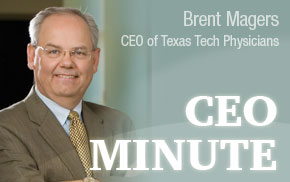 There is an interesting article in The Journal of the American Medical Association
on the Anatomy of Health Care in the United States, which, if you have interest in
the topic, I highly recommend. The article is full of interesting data, descriptions
and ideas. It covers many of the things we talk about regularly in this column and
around the School of Medicine. There is no reason to try to summarize it in this small
column. I have reproduced the abstract so you would have a flavor of what is in it.
It is certainly on the academic side; but it is an excellent reference piece for facts
and figures.
There is an interesting article in The Journal of the American Medical Association
on the Anatomy of Health Care in the United States, which, if you have interest in
the topic, I highly recommend. The article is full of interesting data, descriptions
and ideas. It covers many of the things we talk about regularly in this column and
around the School of Medicine. There is no reason to try to summarize it in this small
column. I have reproduced the abstract so you would have a flavor of what is in it.
It is certainly on the academic side; but it is an excellent reference piece for facts
and figures.Health care in the United States includes a vast array of complex interrelationships among those who receive, provide, and finance care. In this article, publicly available data were used to identify trends in health care, principally from 1980 to 2011, in the source and use of funds, or economic anatomy, people receiving and organizations providing care, and the resulting value created and health outcomes.
In 2011, the U.S. health care system employed 15.7 percent of the workforce, with expenditures of $2.7 trillion, doubling since 1980 as a percentage of U.S. gross domestic product (GDP) to 17.9 percent.
Yearly growth has decreased since 1970, especially since 2002, but, at 3 percent per year, exceeds any other industry and GDP overall. Government funding increased from 31.1% in 1980 to 42.3 percent in 2011.
Despite the increases in resources devoted to health care, multiple health metrics, including life expectancy at birth and survival with many diseases, shows the United States trailing peer nations. The findings from this analysis contradict several common assumptions.
Since 2000, (1) price (especially of hospital charges [+4.2 percent/y], professional services [3.6 percent/y], drugs and devices [+4.0 percent/y], and administrative costs [+5.6 percent/y]), not demand for services or aging of the population, produced 91% of cost increases; (2) personal out-of-pocket spending on insurance premiums and co-payments have declined from 23 percent to 11 percent; and (3) chronic illnesses account for 84 percent of costs overall among the entire population, not only of the elderly.
Three factors have produced the most change: (1) consolidation, with fewer general hospitals and more single-specialty hospitals and physician groups, producing financial concentration in health systems, insurers, pharmacies, and benefit managers; (2) information technology, in which investment has occurred but value is elusive; and (3) the patient as consumer, whereby influence is sought outside traditional channels, using social media, informal networks, new public sources of information and self-management software. These forces create tension among patient aims for choice, personal care, and attention; physician aims for professionalism and autonomy and public and private payer aims for aggregate economic value across large populations. Measurements of cost and outcome (applied to groups) are supplanting individuals’ preferences.
Clinicians increasingly are expected to substitute social and economic goals for the needs of a single patient. These contradictory forces are difficult to reconcile, creating risk of growing instability and political tensions. A national conversation, guided by the best data and information, aimed at explicit understanding of choices, tradeoffs and expectations, using broader definitions of health and value, is needed.
The full article can be accessed here.
